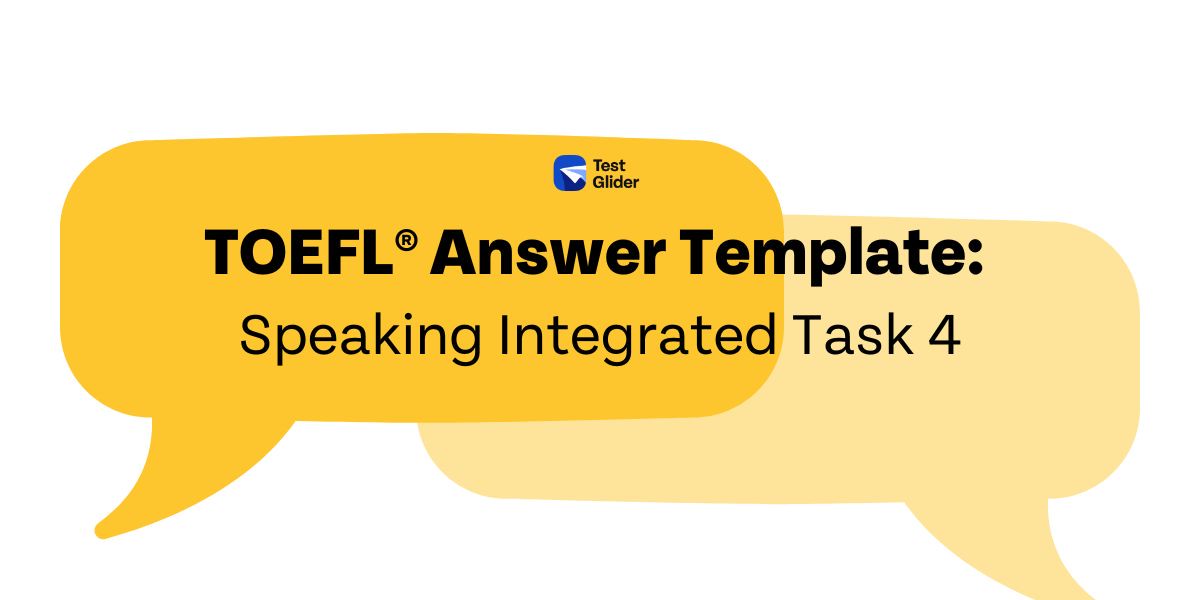In TOEFL Speaking Integrated Task 4, you are given a lecture, which is longer than the lecture you get in Task 3 (usually 1.5~2 minutes long). The lecture is about an academic topic, and there are usually two examples or two different types of ideas in the lecture. You are supposed to summarize the lecture.
If you’re new to the TOEFL, make sure to check out the previous TOEFL Speaking tips and Writing tips. Remember, DO NOT include your own opinion or something that is not related to the given topic. Your job here is to summarize what is mentioned, not state your opinion.
Here is the lecture script that the model answer is based on:
Lecture
Recently, a piece of surprising news was announced. You can actually print an object with the newly invented 3D printer! Many of you might have heard about 3D printers… But did you know that there are various types of 3D printing? Today, we are going to talk about two types of 3D printing. The first one is the FDM method and the other is the SLA method. Each method has its own advantages and disadvantages. Let me explain.
Let’s begin with the FDM method. FDM stands for fused deposition modeling. This method melts the ingredients with a hot nozzle and brings out the melted source. It is similar to a glue gun in that you melt the ingredient and stack it in the form that you want. This method requires the stacking of multiple layers in order for the object to take form. It is easy to use, and it is the most suitable method for individual users. However, it lacks in its details as it is the most basic method.
The second method is the SLA method. SLA stands for stereolithography apparatus. It is the oldest method that uses a photopolymer called Resin. Now… this method uses ultraviolet rays to solidify the Resin in the water tank. After forming the resin, this process is repeated. Sometimes, both the cleaning and solidifying process may additionally be required. The most important benefit of this method is its precision. As this method uses an ultra-violet laser, unlike the FDM method, it can make products with a thin thickness. However, this method also has its disadvantages. It is expensive and hard to make. Therefore, it is unsuitable for individual users.
Model Answer
In the lecture, the professor describes the two types of 3D printing.
First, he talks about the FDM method. This method melts ingredients with a hot nozzle and stacks them up like a glue gun. It requires multiple layers to take form. The advantage of this method is that it’s very easy to use which is good for individuals. However, it lacks detail since it’s a basic method.
Secondly, the professor talks about the SLA method. This method uses ultraviolet rays to solidify resin. The professor explains that the process of solidifying resin is repeated and that sometimes, it requires additional cleaning and solidifying. The advantage of this method is that it’s very precise. However, it’s very expensive and hard to use, which makes it unsuitable for individuals.
For Task 4, your answer should consist of three parts:

- Topic of the Lecture: This will come up at the beginning of the lecture, when the professor says that he is going to talk about something. Make sure you catch that and take note of it because that is going to be the main topic of the lecture.

2. Summary of Type 1 & 2: There usually will be two different ideas in the lecture. However, in some cases, you can also get just one idea that is explained in detail. In that case skip part 3.
Let’s take a look at the model answer:

These two parts make up about 90% of your answer, so you need to take good notes for Task 4.
You have to keep taking notes throughout the lecture so that you have enough information while answering the question. To give you an understanding of how to take notes for task 4, I will include the notes I took while answering this question.

See how most of the information I have on the notes are included in my answer? This is why note-taking is important because it determines how detailed your answer will be.
If you have time left at the end of your answer, you can include a conclusion, but it is not necessary to have one. Make sure to practice taking notes and compare your notes with the model note-taking provided here at TestGlider so that you get a sense of what the key points are and how to take notes during the test. 🙂
This wraps up the template series. I hope this series helps you get a higher score in your TOEFL exam. If you have any questions or requests for future blog posts, please make sure to leave a comment down below.
Good luck!
